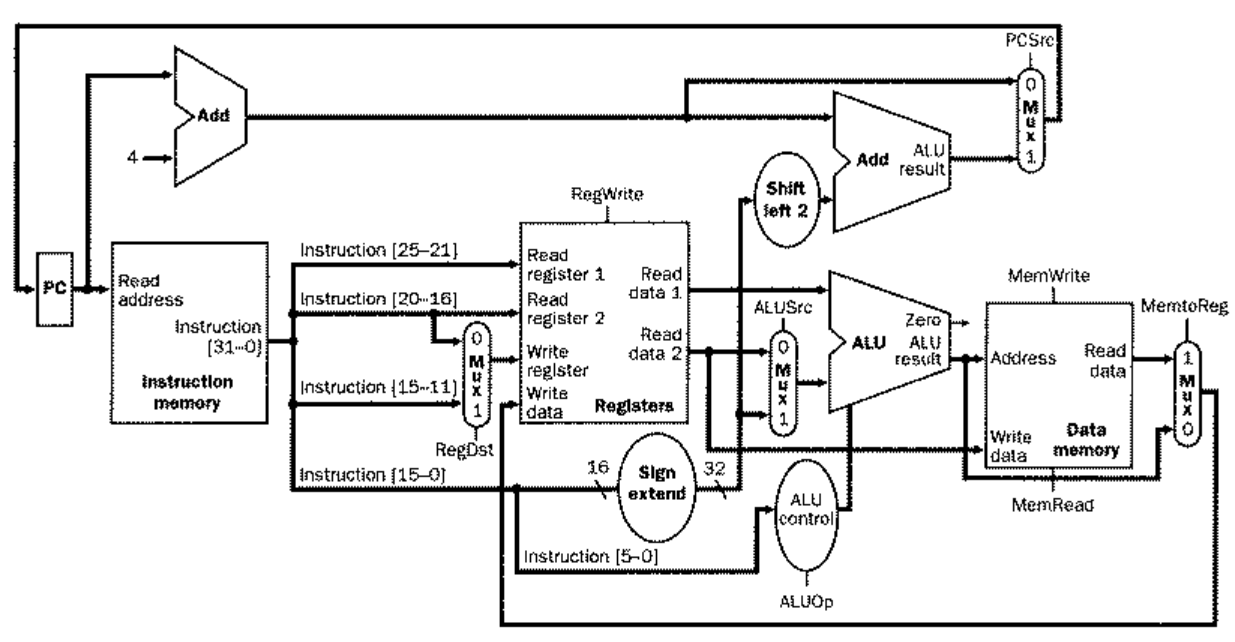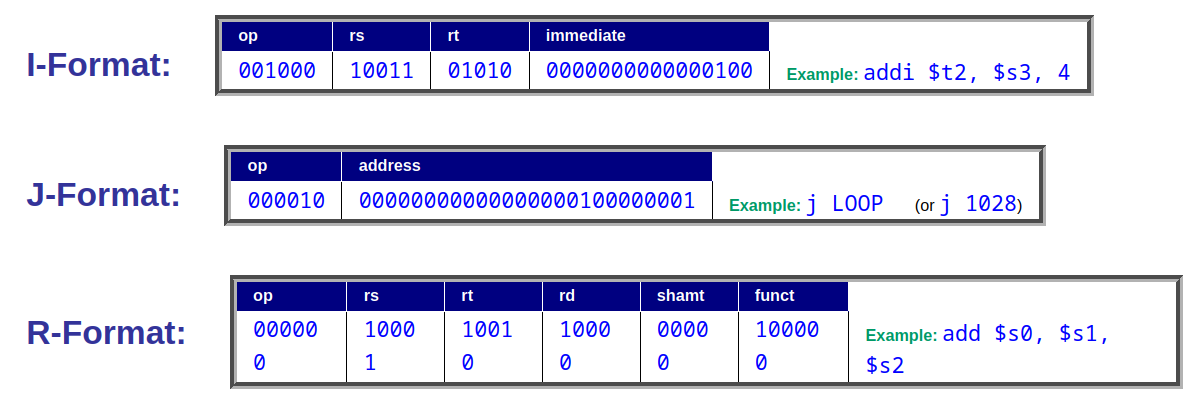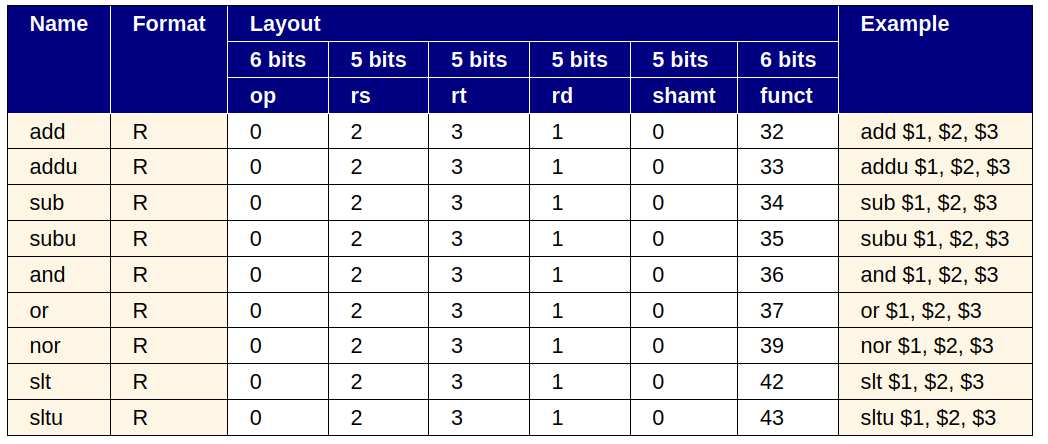Software #
…here’s where you come into the picture. In the last section on hardware we discussed how processors were designed - now we’ll dig into how programmers like you can put these processors to work!
Smart people have designed very easy ways to tell computers what to do, but here is a look at all the work that is in between your programming language and the 1s and 0s that a processor eventually reads!
Binary #
Computers think in binary. Binary is literally just 1s and 0s.
You can also think of binary as true and false or on and off.
One Instruction At A Time #
Let’s pretend when you woke up in the morning your brain thought like this:
0 - WAKE UP ROUTINE
| Address | Instruction |
|---|---|
| 1 | Open your eyes |
| 2 | Sit up in bed |
| 3 | Look at the clock |
| 4 | Read the time (NOW) |
| 5 | Remember the time you need to wake up (TARGET) |
| 6 | Compare these two times |
| 7 | If NOW is past TARGET, get ready for school! |
| 8 | If NOW is before TARGET, go back to sleep for 10 minutes |
| 9 | Restart at instruction 1 |
This is exactly how processors think: procedurally (that’s fancy for one thing at a time, and one action after another.)
You may think that sounds dumb, but Computer Engineers have figured out how to make processors that can process tens of billions of instructions per second.
When writing programs for processors to run, we can’t tell them directly “is the sun up?” or “how cold will it be next Tuesday?” - they have no idea about anything. They need to be given everything they need to solve a problem.
We do this by providing instructions for the processor to read and run.
…let’s take a peek at the brain that reads these instructions first!
A Simple MIPS Processor #
Depending on the design of the processor, the binary (zeroes and ones) instructions we give a processor will look a lot different. Just like people speak English and French, processors speak MIPS and ARM and X86 assembly language.
Conceptually, let’s begin from a simple processor1 we mentioned on the previous page. This guy is designed to read MIPS instructions.
Since you probably aren’t familiar with processor anatomy, I’ll point out a few important bits to you:
- PC - Program Counter - Like the waking-up routine above, the Program Counter keeps our place in the program and can be reset to a different place, like back to 1 if we were to snooze.
- Instruction Memory holds your program. To the right of this, you can see each instruction broken up as it is read and sent to different parts of the CPU.
- Registers are like your short term memory. You can keep a few things here to reference quickly.
- ALU - Arithmetic Logic Unit - Is like your deep memory. It takes quite a while to pull things from here, so usually you save whatever you want from here into a register.
Machine Code #
The point of showing you all this: When we are giving our very lowest level instructions to a computer, we are directly referencing these parts with instructions like:
- Get memory address 89 and move it to register 3
- Add the contents of register 2 and register 3 into register 4
- Save register 4 into memory address 90
The computer sees these instructions like this:
001000 10011010100000000000000100000010 00000000000000000100000001000000 10001100101000000000100000100011 10011010000000000000100000000100 01000000000000000000000101
How do we know which 1’s and 0’s to give to the machine?
Assembly Language #
Luckily, we don’t need to write machine code directly.
For every processor, the designer will have also designed an instruction format that lets users know how to command and control a processor.
For each instruction type, there will be a variety of functions we can tell the processor to perform.
What I show here is not a complete assembly language, but (explanation here)
assembly code: add $s0, $s1, $s2
rd rs rt
machine code: 000000 10001 10010 10000 0000 100000
op rs rt rd funct
From http://www.cs.kzoo.edu/cs230/Resources/MIPS/MachineXL/InstructionFormats.html
Low-Level Programming Languages #
Luckily, we don’t need to write assembly languages directly.
C: a = b + c
rd rs rt
assembly code: add $s0, $s1, $s2
rd rs rt
machine code: 000000 10001 10010 10000 0000 100000
op rs rt rd funct
High-Level Programming Languages #
Luckily, we don’t need to write low-level languages directly.
(+ 1 2)
Overview #
flowchart TD
subgraph Editor
direction LR
EI[Ideas] -- write --> ES[Source Code]
end
subgraph Compiler
direction LR
A[Source Code] -- compile --> B[Assembly Language]
B -- compile --> C[Machine Instructions]
end
subgraph Processor
direction LR
D[Machine Instructions] -- execute --> E[Results!]
end
Editor -- a text file --> Compiler
Compiler -- machine instructions --> Processor


